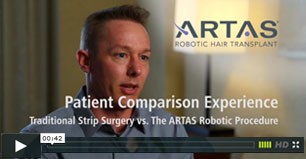PRP Treatment of Hair Loss
Written by Dr. Griffin
If you are researching methods for treatment of hair loss, you may have come across PRP in your reading. PRP stands for platelet rich plasma. It is a procedure whereby a patient’s blood is drawn, spun in a centrifuge to separate the platelets, which are then injected into the scalp. So, you may ask, why and how does this procedure help with hair loss?
Platelets are cells in the blood that are very active in stimulating other cells. They are involved in clotting wounds and then in stimulating other cells to heal a wound. They stimulate other cells by secreting growth factors which are molecules which induce other cells to increase their activity. PRP has been used in other specialties, particularly Orthopedics to help with arthritis and with injuries. Fortunately for those with hair thinning, those growth factors also stimulate hair follicles. How they do this is not completely understood. It is believed that some of the growth factors increase the metabolism of follicles and stimulate them to make stronger hair.
Pattern hair loss in both men and women is a process of progressive miniaturization of the follicles. This happens due to a genetic sensitivity to hormones. As the follicles miniaturize they eventually reach a point whereby they are unable to be stimulated to come back. Our goal is to treat hair loss as early as possible before the follicles reach a point of no return. PRP is one arm in our armamentarium for stimulating follicles to get stronger again. The earlier we do this the better. Results are best in people whose hair loss is not too far advanced. It is particularly useful in women and in younger men. We also use PRP in conjunction with hair transplantation surgery. It helps in the healing of grafts and it also helps any remaining hair on the head.
In summary, you can think of PRP as fertilizer for hair follicles. Your hair loss doctor should be able to provide an assessment of your individual situation. Often, hair transplantation is necessary to replace lost hair in conjunction with PRP to help the remaining hair. Maintenance of the remaining hair by various means is very important in the long term results and management of hair loss because of it’s a tendency to progress over time. PRP can be part of that maintenance program.

